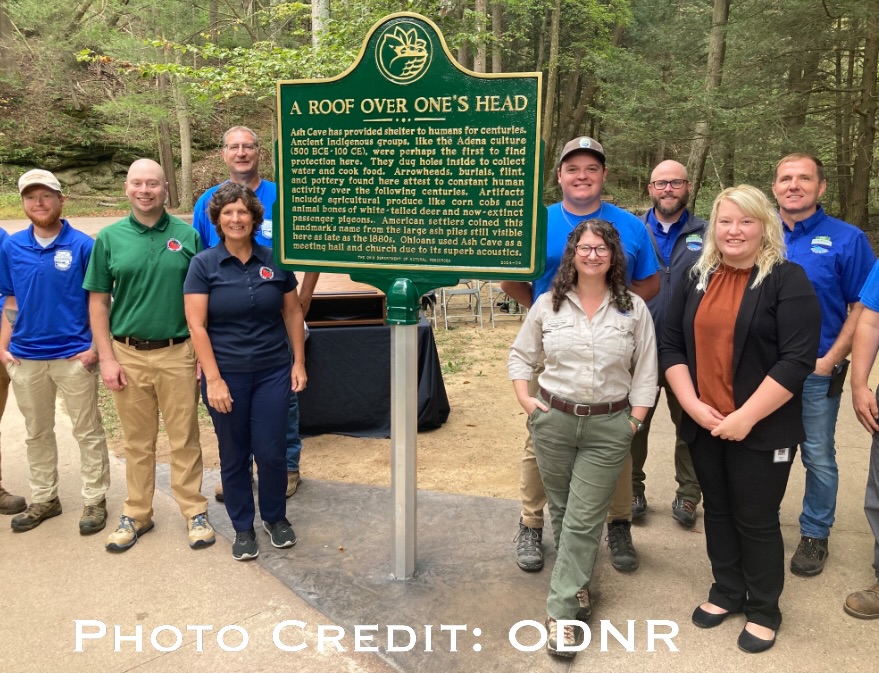
Ash Cave ODNR Historical Marker Installed
Article Presented By Ross Chillicothe Convention & Visitors Bureau…
(Logan) – The Ohio Department of Natural Resources has unveiled a new historical marker at Ash Cave in Hocking Hills State Park, honoring both the natural history and human stories that make this site one of Ohio’s most treasured landmarks.
Located in the southernmost reaches of Hocking Hills, Ash Cave is the largest recessed cave in Ohio. Horseshoe-shaped and breathtaking in scale, it measures nearly 700 feet wide, 100 feet deep, and 100 feet high. Visitors reach the cave by way of a short, scenic quarter-mile gorge trail, framed by towering trees and seasonal wildflowers. In winter, water cascading over the rim often freezes into a stunning natural ice sculpture, adding to the site’s year-round beauty.
“Ash Cave is a place where Ohio’s natural beauty and human history come together in an extraordinary way,” said ODNR Director Mary Mertz. “This marker ensures that the stories of both the land and the people who found refuge here will be remembered for generations to come.”
ODNR’s historical marker highlights Ash Cave’s story, which stretches back more than 300 million years, when shallow seas once covered Ohio. Over time, currents deposited sand and gravel, which hardened into the Black Hand Sandstone. Erosion later carved out the dramatic cavern visitors see today.
Beyond its geological wonder, Ash Cave has long been a place of shelter and gathering. Early Indigenous peoples, including the Adena culture (500 BCE–100 CE), used the cave for protection and daily life, leaving behind tools, pottery, corn cobs, and animal bones. Later, settlers gave Ash Cave its name after discovering a mysterious pile of ashes beneath the overhang. The ash pile was 100 feet long, 30 feet wide, and 3 feet deep. Tests revealed traces of food, bones, and artifacts, sparking theories that the ashes were remnants of centuries of campfires, ceremonial use, or saltpeter production.
With its superb acoustics and natural amphitheater, Ash Cave became a 19th-century gathering place for community events and church services. Pulpit Rock, a large stone at the cave’s entrance, once served as the preacher’s stand for Sunday sermons.
The new marker is part of ODNR’s historical marker program, which recognizes and preserves the stories of significant places, events, and people on ODNR properties across the state.
Visitors can find the marker at the Ash Cave trailhead in Hocking Hills State Park, where it will serve as a lasting tribute to one of Ohio’s most iconic natural wonders and its hidden human history.































